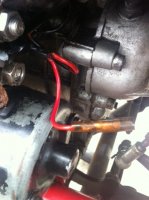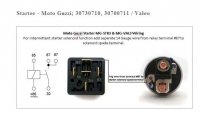capstan1
Tuned and Synch'ed
- Joined
- Jan 16, 2012
- Messages
- 25
Hi All,
I'm having a problem with my starter motor. I went to start it a couple of days ago and it wouldn't crank so I jumped it and it went fine.
Tested battery - all good
Replaced relay
Checked starter wire and there's juice going to the starter motor when I press the starter switch
Bench tested the starter and it whirs away fine
Removed plugs and rotated wheel in fifth gear and it spins fine by hand
Am scratching my head a bit on this.
I checked the wiring diagram and could not find the loose little sucker that's sticking out in attached image and there's no apparent male attachment. This piggybacks on the lead from the neutral switch. Does it usually go somewhere?
I'm having a problem with my starter motor. I went to start it a couple of days ago and it wouldn't crank so I jumped it and it went fine.
Tested battery - all good
Replaced relay
Checked starter wire and there's juice going to the starter motor when I press the starter switch
Bench tested the starter and it whirs away fine
Removed plugs and rotated wheel in fifth gear and it spins fine by hand
Am scratching my head a bit on this.
I checked the wiring diagram and could not find the loose little sucker that's sticking out in attached image and there's no apparent male attachment. This piggybacks on the lead from the neutral switch. Does it usually go somewhere?


